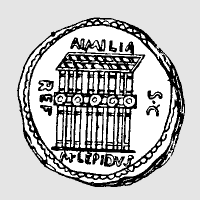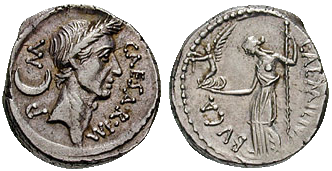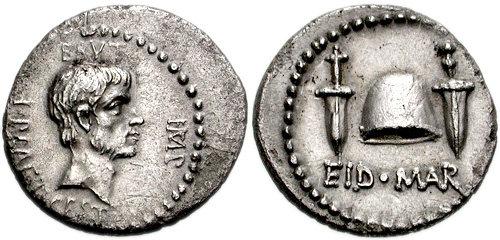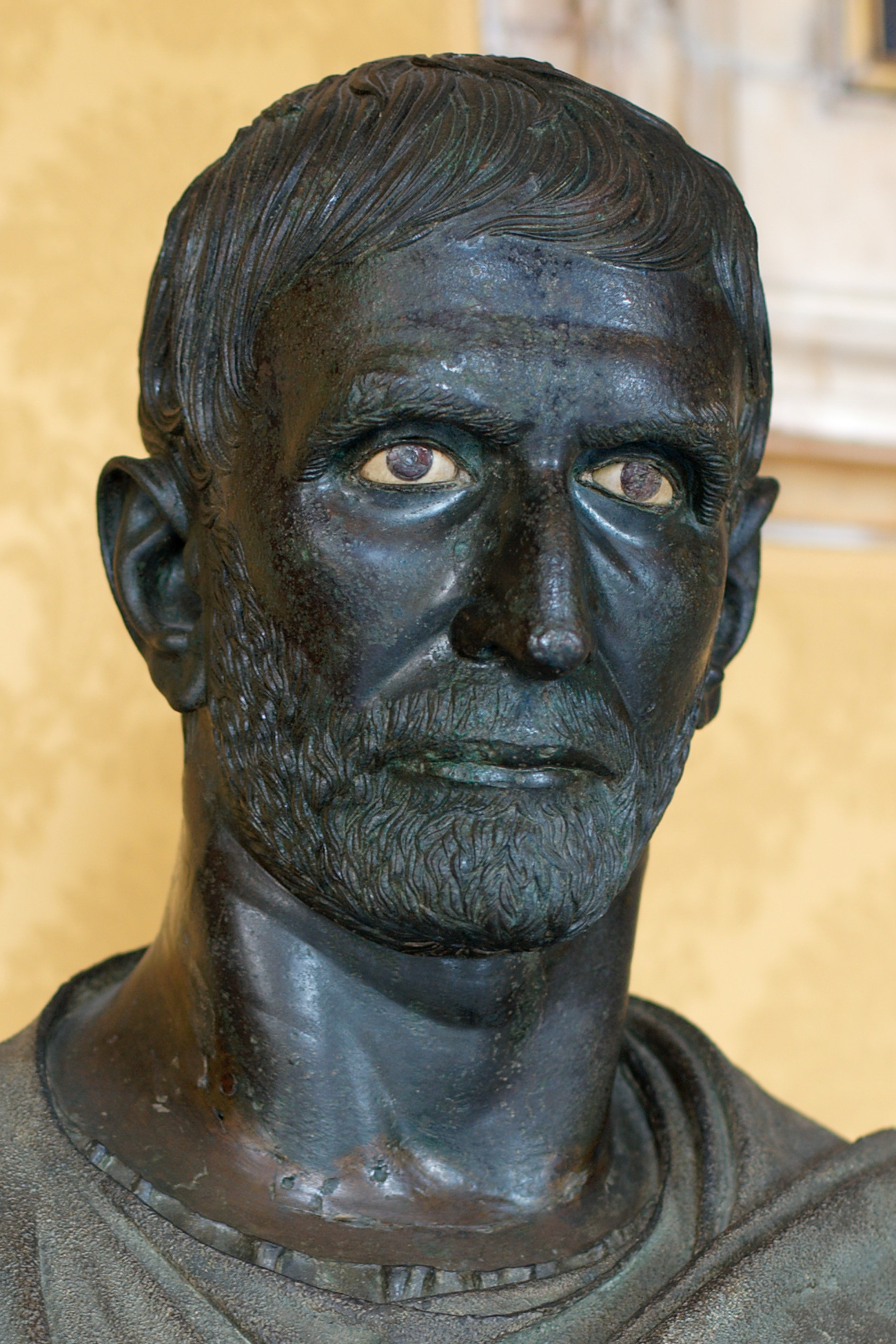|
Battle Of Philippi
The Battle of Philippi was the final battle in the Liberators' civil war between the forces of Mark Antony and Octavian (of the Second Triumvirate) and the leaders of Julius Caesar's assassination, Brutus and Cassius, in 42 BC, at Philippi in Macedonia. The Second Triumvirate declared the civil war ostensibly to avenge Julius Caesar's assassination in 44 BC, but the underlying cause was a long-brewing conflict between the Optimates and the Populares. The battle, involving up to 200,000 men in one of the largest of the Roman civil wars, consisted of two engagements in the plain west of the ancient city of Philippi. The first occurred in the first week of October; Brutus faced Octavian, and Antony's forces fought those of Cassius. The Roman armies fought poorly, with low discipline, nonexistent tactical coordination and amateurish lack of command experience evident in abundance with neither side able to exploit opportunities as they developed. At first, Brutus pushed back Octa ... [...More Info...] [...Related Items...] OR: [Wikipedia] [Google] [Baidu] |
Liberators' Civil War
The Liberators' civil war (43–42 BC) was started by the Second Triumvirate to avenge Julius Caesar's assassination. The war was fought by the forces of Mark Antony and Octavian (the Second Triumvirate members, or ''Triumvirs'') against the forces of Caesar's assassins, led by Marcus Junius Brutus and Gaius Cassius Longinus, referred to as the ''Liberatores''. The latter were defeated by the Triumvirs at the Battle of Philippi in October 42 BC, and committed suicide. Brutus committed suicide after the second part of the battle. Prelude After the murder of Caesar, Brutus and Cassius (the two main conspirators, also known as the Liberatores) had left Italy and taken control of all Eastern provinces (from Greece and Macedonia to Syria) and of the allied Eastern kingdoms. In Rome the three main Caesarian leaders (Antony, Octavian and Marcus Aemilius Lepidus), who controlled almost all the Roman army in the west, had crushed the opposition of the senate and established the secon ... [...More Info...] [...Related Items...] OR: [Wikipedia] [Google] [Baidu] |
Julius Caesar
Gaius Julius Caesar (12 or 13 July 100 BC – 15 March 44 BC) was a Roman general and statesman. A member of the First Triumvirate, Caesar led the Roman armies in the Gallic Wars before defeating his political rival Pompey in Caesar's civil war, a civil war. He subsequently became Roman dictator, dictator from 49 BC until Assassination of Julius Caesar, his assassination in 44 BC. Caesar played a critical role in Crisis of the Roman Republic, the events that led to the demise of the Roman Republic and the rise of the Roman Empire. In 60 BC, Caesar, Marcus Licinius Crassus, Crassus, and Pompey formed the First Triumvirate, an informal political alliance that dominated Roman politics for several years. Their attempts to amass political power were opposed by many in the Roman Senate, Senate, among them Cato the Younger with the private support of Cicero. Caesar rose to become one of the most powerful politicians in the Roman Republic through a string of military victories in the G ... [...More Info...] [...Related Items...] OR: [Wikipedia] [Google] [Baidu] |
Marcus Aemilius Lepidus (triumvir)
Marcus Aemilius Lepidus (; 89 BC – late 13 or early 12 BC) was a Roman general and statesman who formed the Second Triumvirate alongside Octavian and Mark Antony during the final years of the Roman Republic. Lepidus had previously been a close ally of Julius Caesar. He was also the last '' pontifex maximus'' before the Roman Empire, and (presumably) the last '' interrex'' and ''magister equitum'' to hold military command. Though he was an able military commander and proved a useful partisan of Caesar, Lepidus has always been portrayed as the least influential member of the Triumvirate. He typically appears as a marginalised figure in depictions of the events of the era, most notably in Shakespeare's plays. While some scholars have endorsed this view, others argue that the evidence is insufficient to discount the distorting effects of propaganda by his opponents, principally Cicero and, later, Augustus. Family Lepidus was the son of Marcus Aemilius Lepidus (consul in ... [...More Info...] [...Related Items...] OR: [Wikipedia] [Google] [Baidu] |
Augustus
Gaius Julius Caesar Augustus (born Gaius Octavius; 23 September 63 BC – 19 August AD 14), also known as Octavian (), was the founder of the Roman Empire, who reigned as the first Roman emperor from 27 BC until his death in AD 14. The reign of Augustus initiated an Roman imperial cult, imperial cult and an era of regional hegemony, imperial peace (the or ) in which the Roman world was largely free of armed conflict. The Principate system of government was established during his reign and lasted until the Crisis of the Third Century. Octavian was born into an equites, equestrian branch of the plebeian Octavia gens, Octavia. Following his maternal great-uncle Julius Caesar's assassination of Julius Caesar, assassination in 44 BC, Octavian was named in Caesar's will as his Adoption in ancient Rome, adopted son and heir, and inherited Caesar's name, estate, and the loyalty of his legions. He, Mark Antony, and Marcus Lepidus formed the Second Triumvirat ... [...More Info...] [...Related Items...] OR: [Wikipedia] [Google] [Baidu] |
Syria (Roman Province)
Roman Syria was an early Roman province annexed to the Roman Republic in 64 BC by Pompey in the Third Mithridatic War following the defeat of King of Armenia Tigranes the Great, who had become the protector of the Hellenistic kingdom of Syria. Following the partition of the Herodian Kingdom of Judea into a tetrarchy in 4 BC, it was gradually absorbed into Roman provinces, with Roman Syria annexing Iturea and Trachonitis. By the late 2nd century AD, the province was divided into Coele Syria and Syria Phoenice. Provincia Syria Syria was annexed to the Roman Republic in 64 BC, when Pompey the Great had the Seleucid king Antiochus XIII Asiaticus executed and deposed his successor Philip II Philoromaeus. Pompey appointed Marcus Aemilius Scaurus to the post of governor of Syria. Following the fall of the Roman Republic and its transformation into the Roman Empire, Syria became a Roman imperial province, governed by a Legate. During the early empire, the Roman army ... [...More Info...] [...Related Items...] OR: [Wikipedia] [Google] [Baidu] |
Greece In The Roman Era
Greece in the Roman era (, ) describes the Roman conquest of ancient Greece (roughly, the territory of the modern nation-state of Greece) as well as that of the Greek people and the areas they inhabited and ruled historically. It covers the periods when Greece was dominated first by the Roman Republic and then by the Roman Empire. In the history of Greece, the Roman era began with the Corinthian defeat in the Battle of Corinth in 146 BC. However, before the Achaean War, the Roman Republic had been steadily gaining control of mainland Greece by defeating the Kingdom of Macedon in a series of conflicts known as the Macedonian Wars. The Fourth Macedonian War ended at the Battle of Pydna in 148 BC with the defeat of the Macedonian royal pretender Andriscus. The definitive Roman occupation of the Greek world was established after the Battle of Actium (31 BC), in which Augustus defeated Cleopatra VII, the Greek Ptolemaic queen of Egypt, and the Roman general Mark Antony, and afte ... [...More Info...] [...Related Items...] OR: [Wikipedia] [Google] [Baidu] |
Italy
Italy, officially the Italian Republic, is a country in Southern Europe, Southern and Western Europe, Western Europe. It consists of Italian Peninsula, a peninsula that extends into the Mediterranean Sea, with the Alps on its northern land border, as well as List of islands of Italy, nearly 800 islands, notably Sicily and Sardinia. Italy shares land borders with France to the west; Switzerland and Austria to the north; Slovenia to the east; and the two enclaves of Vatican City and San Marino. It is the List of European countries by area, tenth-largest country in Europe by area, covering , and the third-most populous member state of the European Union, with nearly 59 million inhabitants. Italy's capital and List of cities in Italy, largest city is Rome; other major cities include Milan, Naples, Turin, Palermo, Bologna, Florence, Genoa, and Venice. The history of Italy goes back to numerous List of ancient peoples of Italy, Italic peoples—notably including the ancient Romans, ... [...More Info...] [...Related Items...] OR: [Wikipedia] [Google] [Baidu] |
Liberatores
Julius Caesar, the Roman dictator, was assassinated on the Ides of March (15 March) 44 BC by a group of senators during a Senate session at the Curia of Pompey, located within the Theatre of Pompey in Rome. The conspirators, numbering between 60 and 70 individuals and led by Marcus Junius Brutus, Gaius Cassius Longinus, and Decimus Junius Brutus Albinus, stabbed Caesar approximately 23 times. They justified the act as a preemptive defense of the Roman Republic, asserting that Caesar's accumulation of lifelong political authority—including his perpetual dictatorship and other honors—threatened republican traditions. The assassination failed to achieve its immediate objective of restoring the Republic's institutions. Instead, it precipitated Caesar's posthumous deification, triggered the Liberators' civil war (43–42 BC) between his supporters and the conspirators, and contributed to the collapse of the Republic. These events ultimately culminated in the rise of ... [...More Info...] [...Related Items...] OR: [Wikipedia] [Google] [Baidu] |
Roman Republic
The Roman Republic ( ) was the era of Ancient Rome, classical Roman civilisation beginning with Overthrow of the Roman monarchy, the overthrow of the Roman Kingdom (traditionally dated to 509 BC) and ending in 27 BC with the establishment of the Roman Empire following the War of Actium. During this period, Rome's control expanded from the city's immediate surroundings to hegemony over the entire Mediterranean Sea, Mediterranean world. Roman society at the time was primarily a cultural mix of Latins (Italic tribe), Latin and Etruscan civilization, Etruscan societies, as well as of Sabine, Oscan, and Greek cultural elements, which is especially visible in the Ancient Roman religion and List of Roman deities, its pantheon. Its political organisation developed at around the same time as direct democracy in Ancient Greece, with collective and annual magistracies, overseen by Roman Senate, a senate. There were annual elections, but the republican system was an elective olig ... [...More Info...] [...Related Items...] OR: [Wikipedia] [Google] [Baidu] |
Suicide
Suicide is the act of intentionally causing one's own death. Risk factors for suicide include mental disorders, physical disorders, and substance abuse. Some suicides are impulsive acts driven by stress (such as from financial or academic difficulties), relationship problems (such as breakups or divorces), or harassment and bullying. Those who have previously attempted suicide are at a higher risk for future attempts. Effective suicide prevention efforts include limiting access to methods of suicide such as firearms, drugs, and poisons; treating mental disorders and substance abuse; careful media reporting about suicide; improving economic conditions; and dialectical behaviour therapy (DBT). Although crisis hotlines, like 988 in North America and 13 11 14 in Australia, are common resources, their effectiveness has not been well studied. Suicide is the 10th leading cause of death worldwide, accounting for approximately 1.5% of total deaths. In a given year, ... [...More Info...] [...Related Items...] OR: [Wikipedia] [Google] [Baidu] |
Roman Legion
The Roman legion (, ) was the largest military List of military legions, unit of the Roman army, composed of Roman citizenship, Roman citizens serving as legionary, legionaries. During the Roman Republic the manipular legion comprised 4,200 infantry and 300 cavalry. After the Marian reforms in 107 BC, the legions were formed of 5,200 men and were restructured around 10 cohorts, the first cohort being double strength. This structure persisted throughout the Principate and Roman Empire, middle Empire, before further changes in the fourth century resulted in new formations of around 1,000 men. Size The size of a typical legion varied throughout the history of ancient Rome, with complements ranging from 4,200 legionaries and 300 ''equites'' (drawn from the wealthier classes – in early Rome all troops provided their own equipment) in the Republic, to 5,500 in the Imperial period, when most legions were led by a Roman Imperial Legate. A legion had 4,800 Legionary, legionaries ( ... [...More Info...] [...Related Items...] OR: [Wikipedia] [Google] [Baidu] |
Military Tactics
Military tactics encompasses the art of organizing and employing fighting forces on or near the battlefield. They involve the application of four battlefield functions which are closely related – kinetic or firepower, Mobility (military), mobility, protection or security, and Shock tactics, shock action. Tactics are a separate function from command and control and logistics. In contemporary military science, tactics are the lowest of three levels of warfighting, the higher levels being the military strategy, strategic and Operational level of war, operational levels. Throughout history, there has been a shifting balance between the four tactical functions, generally based on the application of military technology, which has led to one or more of the tactical functions being dominant for a period of time, usually accompanied by the dominance of an associated Combat arms, fighting arm deployed on the battlefield, such as infantry, artillery, cavalry or tanks. Tactical functions Ki ... [...More Info...] [...Related Items...] OR: [Wikipedia] [Google] [Baidu] |








